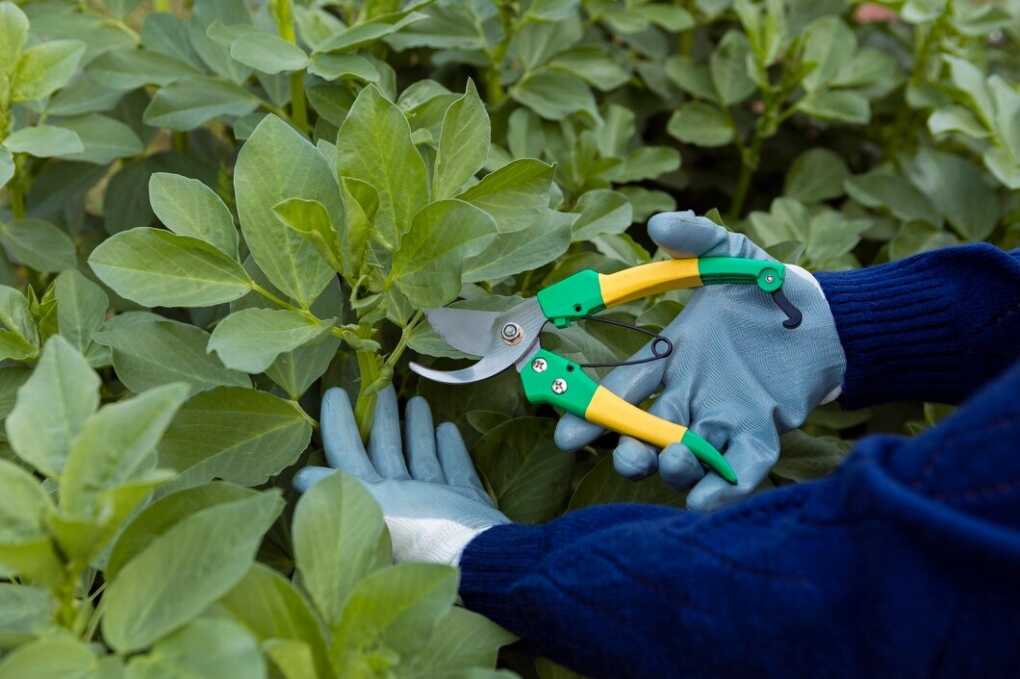Trees make Sydney’s suburbs feel greener, cooler, and calmer. They shade decks, soften street noise, and lift property value. But when a tree starts struggling, it can quickly shift from asset to risk. Knowing the early warnings helps you act before damage, disputes, or costly emergencies kick in.
This guide breaks down the top signs your tree needs professional attention and explains how tree removal works in the real world. You’ll learn what to look for, when to call a qualified arborist, and how to plan safe, compliant work with minimal fuss.

Understanding the Importance of Professional Tree Services
Why professional care beats DIY
Could you prune that branch yourself? Maybe. Should you? That’s another story. Climbing, rigging, and cutting are skilled tasks. One wrong cut can destabilise a tree or trigger decay that shows up years later. Pros understand tree biology, load paths, and how to prune for structure and safety.
Safety, insurance, and liability
Falling limbs, chainsaw injuries, and damaged roofs are common in DIY attempts. Licensed and insured arborists bring trained crews, the right gear, and strict safety systems, which protect your home, your family, and your neighbour’s fence.
Legal considerations and council approvals in NSW
In Sydney, many councils regulate tree work. Some species, sizes, or locations need permission before pruning or removal. Penalties for unauthorised work can be steep. A local arborist can advise on whether you need an application, a report, or evidence that the tree is dead, dangerous, or structurally unsound. Always check first, then cut.
Common Signs of Tree Distress
Leaf Discolouration and Premature Fall
Seasonal change or stress signal
Leaves yellowing in autumn is normal. Leaves yellowing in early summer? That’s a red flag. Off-season colour change, scorched edges, or sparse foliage often point to stress from heat, drought, root damage, or disease.
Nutrient issues vs soil compaction
Not all yellow leaves need fertiliser. In urban yards, compacted soil is a frequent culprit. When fine roots can’t breathe, trees starve even in fertile soil. Look for hard, crusted ground, pooling water, or lawns that feel like concrete underfoot.
Unusual Growth Patterns and Structural Issues
Cracks, cavities, and co-dominant stems
Vertical cracks, deep fissures, or bark splitting indicate internal weakness. Cavities can hold water and rot. If your tree forks into two similar-sized stems without a strong union, that junction can fail under wind load. A pro can install bracing or reduce sail area with structural pruning.
Sudden leaning and root plate movement
A gentle lean that’s been there for years is often stable. A new lean is a different story, especially after rain or wind. Call an arborist now if the soil on the lifted side looks heaved or the ground has cracks near the base.
Heaving soil and exposed roots
Heaving suggests the root plate is shifting. Exposed roots can be harmless or a sign of erosion and stress. Never cut large surface roots to tidy the lawn. That can destabilise the tree and starve it.
Pests and Diseases Affecting Trees
Common Sydney pests to watch
Borers leave small exit holes and sawdust-like frass. Psyllids can cause leaf blistering on lilly pillys. Scale insects leave sticky honeydew that attracts sooty mould. A light infestation might be managed, but heavy infestations need professional treatment.
Fungal infections and dieback
Bracket fungi, conks, or mushrooms on the trunk indicate internal decay. Dieback starts at the tips and works inward. If you see deadwood across the canopy, don’t wait. Decay reduces the wood’s strength, even when the tree looks solid from the outside.
Bark damage and oozing sap
Weeping sap, cankers, or sunken patches can signal disease or mechanical injury from mowers, whipper snippers, or vehicles. Protect the trunk with a mulch ring rather than turf up to the bark.
The Impact of Weather on Tree Health
Storm damage and wind-throw
Sydney storms can push even healthy trees to the limit. Look for hanging branches, stripped bark, or torn crotches. Hidden cracks often appear where branches meet the trunk. A quick post-storm inspection can prevent surprises later.
Heatwaves, drought stress, and watering habits
Extended dry spells and hot winds can dehydrate canopies. Leaves curl, scorch, and drop early. Deep, infrequent watering beats daily sprinkles. Aim for slow soaks at the dripline, not a quick blast at the trunk.
Flooding, saturated soils, and root suffocation
After heavy rain, saturated soils starve roots of oxygen. That can cause rapid yellowing and sudden collapse. Good drainage and mulch help the soil recover faster.
When to Call a Professional Arborist
Urgent red flags that need immediate action
- A fresh, noticeable lean, especially after the weather.
- Cracks in the trunk or major limb attachments.
- Large dead limbs over driveways, decks, or play areas.
- Heaving soil at the base, or roots lifting the ground.
- Fungi growing from the trunk or major roots.
If you see any of these, get advice promptly. Waiting increases risk and can turn a manageable problem into a removal issue.
Tree risk assessments and reports
Qualified arborists can provide formal risk assessments. They evaluate targets below the tree, the likelihood of failure, and the consequences. A written report helps you plan the work and secure approvals if needed for councils, body corporates, or insurance.
Repair, support, or remove
Not every problem means removal. Sometimes, pruning, cabling, or soil improvement is enough. Removal may be the safest option when defects are severe or the tree is in the wrong place. A good arborist will explain options, costs, and likely outcomes.
Preventative Tree Maintenance Tips
Smart pruning that trees actually like
Prune young trees for strong structure. Remove crossing branches and reduce competing leaders. Make clean cuts just outside the branch collar. Avoid topping, which creates weak sprouts and decay points.
Mulch, water, and feed properly
A wide mulch ring keeps roots cool, retains moisture, and improves soil. Keep mulch clear of the trunk. Water deeply during dry spells, focusing on the outer root zone. Fertilise only when soil tests or foliage symptoms justify it. More is not always better.
Protecting the root zone
Most roots sit in the top 30 centimetres of soil. Avoid heavy parking, new paving, or trenching under the canopy. Plan services away from the dripline or use root-friendly techniques if you’re renovating.
When removal is the most responsible choice
Removal can be the safest and most cost-effective path if a defective tree constantly drops large limbs, has extensive decay, or stands over high-use areas. You can then replant with a species better suited to your space and soil.
Choosing a Tree Removal Service in Sydney
What to ask your arborist before hiring
- Are you qualified and insured, and can you provide certificates?
- What pruning or removal method will you use and why?
- How will you protect my garden, driveway, and fences?
- What is included in the quote, from clean-up to stump grinding?
- Do I need council approval, and can you help with the paperwork?
Clear answers show professionalism. Detailed quotes prevent surprise charges.
Understanding permits and council rules
Rules vary between councils. Some trees are exempt, while size, species, or location protect others. Heritage listings and development conditions can add layers. A local arborist familiar with tree removal Sydney processes can advise whether your job needs an application or if it qualifies under risk or maintenance allowances.
How costs are calculated
Tree removal costs depend on height, spread, access, risk, and complexity. Difficult crane work, tight laneways, or trees over buildings raise the price. Ask for a breakdown. Sometimes a staged approach, such as initial safety pruning followed by later removal, makes sense.
Stump grinding and green waste management
Leaving a stump can invite pests and regrowth. Stump grinding clears the space for landscaping. Confirm how deep the grind will be, especially if you plan to replant. Check whether mulch stays on site or is removed, and whether logs are recycled or chipped.
Eco-Friendly and Neighbour-Aware Practices
Habitat and wildlife considerations
Hollows provide homes for native birds and possums. If safe and permitted, retaining habitat stubs is an option. Where removal is necessary, consider offset planting with local species. Native shrubs and small trees can restore habitat without overwhelming a small yard.
Minimising disruption on tight Sydney blocks
City blocks can be narrow, with overhead lines, shared driveways, and schools nearby. Professional crews plan rigging routes, traffic control, and timing to reduce disruption. They protect paving with mats and avoid dragging limbs across lawns.
Talking to neighbours and the body corporates
Good communication avoids disputes. Share timelines, access needs, and noise windows. For strata, provide the arborist’s report and proof of insurance. Everyone relaxes when the plan is clear.
Conclusion
Healthy trees make Sydney living better. The trick is spotting trouble early, acting safely, and choosing qualified help. If your tree is dropping leaves out of season, leaning after storms, showing fungi, or shedding big limbs, it is time to speak with a professional. With the right advice, you will know whether to prune, support, or proceed with tree removal. Do the checks, get a clear plan, and protect your home, your neighbours, and the green character of your street.
